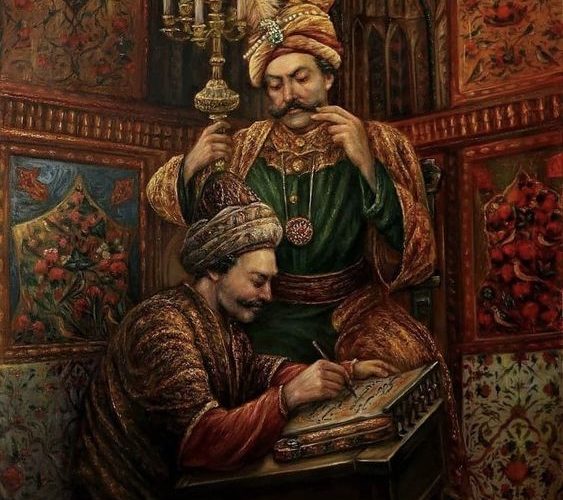Introduction to Safavid dynasty
The land of Iran, where has been the cradle of various parties, groups, and civilizations, holds an ancient and diverse history. About 900 years had passed since the last unified empire of Persia, the Sassanids, and many governments of the Persian dynasty took over, however, none of them had been able to have the territorial integrity of Persia as a single sub-flag. Safavid dynasty finally managed dispersals, governing the country centrally after nine centuries. The Safavids (1501-1736) were one of the first Persian governments to formalize the Shia religion, creating one of the golden ages of Islam and the culmination of Islamic civilization.

Formation of the Safavid
The Safavid rule was an Azeri tribe in northwestern Iran; Their ancestor was named Sheikh Safi al-Din Ardabili, one of the famous mystics of that time. The Safavids, using the name of their ancestor, gathered their followers and were able to form an army. They also transferred the capital to Tabriz after cohesion and unity prevailed in the country in the early days of the government. The Safavids introduced themselves as Sufis and mystics. Shah Ismail I was the first Safavid king, Shah Abbas I was the most prominent Safavid ruler, and the last king was Shah Sultan Hussein. Regarding geographical borders, during the reign of Shah Abbas, the Persian empire’s borders were equal to the Sassanid period.
Safavids in Tabriz
Tabriz, one of the oldest capitals of Persia, is the first capital of the Safavids and the coronation location of Shah Ismail I, the founder of the dynasty. With the arrival of the Safavids in Tabriz, the city experienced one of its most prosperous periods. The Safavids built many installations in Tabriz, especially during the reign of Shah Ismail Safavid; many artists were brought to Tabriz from Herat after the conquest of the city, using their art in constructing and embellishing these buildings, but unfortunately, none of them are left today. As Tabriz was close to the Persian-Ottoman border, one of Persia’s fiercest enemies, the city was heavily threatened and attacked, so Shah Tahmasp Safavid decided to relocate the capital from Tabriz to Qazvin. In addition to the attacks of the Ottomans and the Uzbeks, Tabriz suffered a severe earthquake that caused irreparable damage inflicted on the city and its historical monuments.
Shah Abbas Safavid
Qazvin became the second capital of the Safavid dynasty for 57 years. Many changes and developments took place in the city at this time. Qazvin, a gathering place for many administrators, thinkers, scientists, and artists, became the land of exquisite gardens and magnificent monuments. The Ali Qapu Gate and Chehel Sotun Palace of Qazvin are valuable relics of this period. After a relatively long and illustrious period, Shah Abbas ceded the title of capital to Isfahan due to the astronomers who predicted Qazvin as a dangerous place for him.
Isfahan contained a nature that fascinated Shah Abbas Safavid. Such a spectacular nature and the astronomers’ predictions along with other factors such as the trading prosperity, reducing the power and influence of the Qizilbash group, made Esfahan a safe capital for the Safavids. You can find the most glorious architectural heritage of the Safavid period in Esfahan, especially in Naqsh-e Jahan Square. This unique historical complex was built by Shah Abbas immediately after choosing Esfahan as the country’s capital. The construction of hammams, caravanserais, water reservoirs, bridges, various mosques, and Tekyehs were other measures taken by the Safavids for the Isfahan’s development.

Political and Economic Status during the Safavid dynasty
During the Safavid rule, the country developed; the trade and agricultural industry flourished. The rulers of the Safavid dynasty in Persia provided the trade and agriculture’s expansion possibilities by creating political and administrative unity as a critical factor. The growth of trade prosperity required safe roads and paths, so the regulations imposed during the reign of Shah Abbas I met such a need. Following the developments, during the Safavid rule, especially during the reign of Shah Abbas I, urbanization grew and expanded rapidly. Gradually, urbanization developed by the new type buildings and neighborhoods constructed next to old ones. As a result, the quarters became densely populated, and bazaars and commercial affairs flourished. The presence of a great scientist and writer such as Sheikh Baha’i in the Safavid court was one of the blessings that made this period rich and the peak of prosperity in the history of Isfahan.
The end of Safavid dynasty
The Battle of Chaldiran broke out during this government. Eventually, Safavid’s rule was defeated by the incompetence of its last kings from the Afghans and disappeared from the world. The Safavid rule, which began with the victory of Shah Ismail I in several wars in Tabriz, ended in Isfahan with the capture of Shah Sultan Hussein and the surrender of his crown to Mahmud Afghan.

